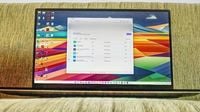Google Drive has officially launched its app for Arm-based Windows PCs, marking a significant step in the support for Arm64 architecture. Beginning March 24, 2025, users can now access the much-anticipated cloud storage service without the limitations that came with the previous beta version rolled out back in November 2024.
According to a report by Android Police, the Arm64 version of Google Drive allows users to store, sync, and access files securely on Windows PCs equipped with Qualcomm’s Snapdragon processors. This broadened compatibility signifies a pivotal shift as the Arm64 computing framework continues to gain traction in various sectors.
The Google Drive app is compatible only with devices running Windows 11 and requires Microsoft WebView 2, which Google states is “typically included” with Windows 11 installations. For those who previously downloaded the beta version, the app will prompt an upgrade to the latest release, ensuring that users can easily transition and take advantage of optimizations in the new version. Users who need to install the app for the first time can download Google Drive specifically designed for Arm64 architecture directly from Google’s website.
Since the launch of Qualcomm-equipped Copilot Plus PCs, a variety of applications have moved toward supporting Arm64, including well-known names like Google Chrome, NordVPN, and ExpressVPN. This growing roster of compatible applications underscores the importance of this transition, demonstrating that Arm-based PCs are no longer niche or experimental but are becoming increasingly viable for everyday use.
The Snapdragon 8 Elite chipset serves as the engine behind this new chapter, enabling compute-heavy software that could only dream of running efficiently on such devices in the past. Analysts have noted that the significant computational capabilities of Snapdragon processors now compete with traditional x86/x64 counterparts, essentially leveling the playing field between mobile and desktop computing.
This launch is not just symbolic; it offers a glimpse of what the future holds for Arm-based computing. As users become more accustomed to the advantages of lightweight, energy-efficient devices within the realm of productivity, the demand for robust applications is only set to rise. Notably, as Android Police highlighted during the past year, the momentum in this market sector could very well mean that Windows on Arm is primed for its day in the sun.
Google’s initiative to support Arm64 follows a broader trend of major tech entities reaffirming their commitment to this platform. For instance, other renowned services, such as Proton VPN and the encrypted messaging app Signal, have also adapted to cater to this new computing landscape. Additionally, while gaming seems to tread cautiously around Arm64 support, companies like Valve have expressed interest, hinting at the possibility of future integrations.
With the official launch of Google Drive, industry experts anticipate a lively ecosystem of applications, services, and devices evolving together. This trend signals to developers that there is now a significant and expanding market for them to engage with. Furthermore, as more users migrate to these efficiency-oriented setups, the ongoing refinement of software and support for Arm64 is poised to become an integral part of the PC experience.
The timing of this launch is particularly relevant as digital workflows have shifted increasingly online, emphasizing the necessity for reliable cloud services like Google Drive. In today’s economy, most work occurs within digital ecosystems, where seamless integration between tools and services is key to productive work environments.
The push towards enhancing Arm64 compatibility also reinforces the belief among tech enthusiasts that a transition from the traditional computing domain is underway. As seen in previous years, early adopters of Arm-powered devices faced challenges due to a lack of app support, with critics highlighting the limitations of early models regarding productivity and application availability. However, with advances in technology and increased developer investment, these concerns have gradually dissipated.
In conclusion, the general availability of Google Drive for Arm-based Windows PCs is a significant milestone. It not only validates the efforts made towards integrating Arm64 technology into more conventional computing practices but also inspires confidence among users and developers. As the landscape continues to evolve, the potential for Arm-based computing is bright, with many looking forward to a future exceptionally different from the one defined by earlier generations of Windows-based machines.





